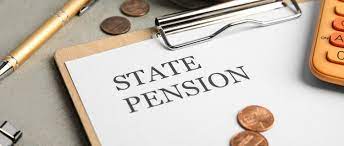Protect Child Benefit
If you have children and receive Child Benefit, look at the total incomes of both yourself and your partner. If either one of you has income in excess of £50,000 then Child Benefit is gradually withdrawn. If income of either partner reaches £60,000 then it’s clawed back completely. So, look at how you might be able to engineer both incomes so as not to exceed £50,000, perhaps by switching income around between you. Please be sure to tell us, when you submit your tax return checklist to Ellie, if you or your partner has received Child Benefit as we need to know. It may be that we can keep your total income below £50,000 by restricting dividends, so here’s a good reason why you should get the tax return checklist over to us as quickly as possible. Note that for next tax year 2024/25 the £50,000 threshold rises to £60,000 and the upper £60,000 threshold climbs to £80,000.
Donate tax-efficiently
Consider making donations under Gift Aid to a registered charity. If you donate say £80 then the charity can claim back £20 from HMRC. If you’re a higher rate taxpayer, you’ll get £20 off your personal tax bill which reduces the true cost of your donation to £60. So, it costs you £60 and the charity receives £100. If you’re in a position to donate assets to a charity then this can be done without having to pay capital gains tax on transfer of the assets. Again, please remember to tell us if you have made charitable donations as we’ll need to ‘claim’ for these on your tax return.
Making payments back to your company for benefits in kind
It will soon be time for us to produce P11D’s for our clients and their employees. If you have any benefits in kind (company car, private medical insurance etc. paid for by the company) it could be worth looking at making a payment from yourself back to the company to reduce the size of the benefit in kind. So, if your company car benefit in kind value works out at say £5,000 for 2023/24 and you pay £3,000 back to your company by 5th April, you’ll only be taxed on £2,000 rather than £3,000. Let me know if this is something you’d like to consider.
Mind the gap!
I realise that this won’t be applicable to everyone but, if you’re in the fortunate position of having income for 2023/24 of between £100,000 and £125,140, you may well want to consider ways in which you can reduce it to below £100,000. That’s because, as well as paying income tax of 40% (33.75% if it’s on dividends) on every additional pound of income, you’ll suffer a withdrawal of the £12,570 personal tax allowance. It’s taken away at a rate of 50p of every extra pound of income over £100,000. So, if your income is £110,000 (£10,000 over the £100,000 threshold), your personal tax allowance will be reduced by £5,000 – from £12,570 to £7,570. The combined impact of the reduced personal allowance and the higher rate tax means that over 60% of the income you earn between £100,000 and £125,140 will be paid to HMRC. If your income is likely to be in this band, consider some of the options below to reduce it, particularly pension contributions.
Inter-spouse transfers
There’s no capital gains tax on the transfer of assets between spouses. If one of you is a higher rate taxpayer and the other pays tax at the basic rate, consider moving assets to the basic rate partner prior to selling the asset to a third party. If you’re planning on getting married, consider transferring assets (this can include shares in your company) to your new spouse on marriage. It makes sense to spread income-bearing assets (like shares in your company, buy-to-let properties and other investments) around between you. In the case where one of you has a high income (perhaps near to or above the higher rate threshold of £50,270) and the other has a low income, it may be that the likes of buy-to-let properties and other investments would be better held solely by the lower-income partner. The key point here is that there is no capital gains tax issue in moving the assets around in order to get the most tax-efficient ‘ownership mix’.
Capital gains
For the current tax year, the first £6,000 of gains is exempt from tax. The annual exemption drops to £3,000 for the new tax year 2024/25. Beyond the annual exemption amount, you’ll pay 10% on any remaining gains that fall within your basic rate band and 20% on anything in excess of this. However, if the gain has arisen from the sale of property (e.g. a buy-to-let investment), those rates are 18% and 28% respectively (although the 28% drops to 24% from 6th April 2024).
If the gain arises from the sale of shares which qualify for business asset disposal relief (previously known as entrepreneur relief) then the whole gain (up to a lifetime disposal limit of £1m) is taxed at 10% (it doesn’t rise to 20% for that element of the gain above the higher rate threshold).
If you’re planning on disposing of any personal assets (including buy-to-lets) and have the option of doing it by 5th April or delaying it until the new tax year, bear in mind the upcoming reduction in the annual exemption, but also the reduction in the 28% rate to 24%. If you need help deciding on which option works better for you, give us a call.
Have you got unused capital losses?
If you’ve incurred losses in the past when selling assets, you may have some unused capital losses which are being carried forward each tax year. These losses have to be offset against the first available gains on selling further assets. So, if this applies to you and if you currently own assets where a capital gain has accrued, consider selling these before the end of the current tax year so as to mop up your brought-forward losses. If you’re planning on selling your business, you’ll almost certainly only pay 10% capital gains tax (business asset disposal relief) on the first £1m of proceeds. In this case, you want to try and use up any brought forward losses against disposals that would attract a higher rate of capital gains tax as, if you don’t, the losses will be offset against the sale of the business and you’ll then only get tax relief at 10%. So, if you’ve got unused capital losses (maybe from the sale of shares or property at a loss in the past) and you’ve also currently got assets (e.g. property) on which capital gains tax would be payable on disposal at more than 10%, think about selling the assets with the pregnant gains prior to selling your business.
Personal pension contributions
You can now put up to £60,000 per annum into a pension. If you want/need to put in more, please speak with me as it may be possible to utilise any unused allowances for the three previous tax years. By doing so, you’ll get 20% tax relief as a basic rate taxpayer and 40% relief as a higher rate taxpayer.
Use pensions to avoid higher rates of tax
Where your income falls into a higher tax bracket, pension contributions will enable you to effectively bring your income down so that it is taxed at basic rather than higher rate. So, with an income of £110,000, a pension contribution would be a great way to avoid the effective tax rate of over 60% that I referred to above for those with incomes in excess of £100,000. Or, if you’re just into the higher rate tax band, you can contribute to avoid the 40% rate (33.75% for dividends). This could also be a good strategy if you’re going to have capital gains tax to pay.
Contribute to pensions for your family
As anyone can contribute up to £3,600 to a pension scheme, even if they have no qualifying earnings, have you considered making contributions to schemes for spouses/children? Would it be worth setting up pensions for them and making contributions before 5th April?
Renting out a room in your home
Be sure to tell us if you receive income from letting out a room in your main residence as you’re allowed to earn rental income of £7,500 in 2023/24 from doing this – and it will all be exempt from income tax.
£1,000 property allowance
You can earn up to £1,000 from say renting out your driveway to someone – and it’s covered by the ‘property allowance’ and so will be tax-free. No relief is available however for any amounts received from:
- An employer, or a spouse/civil partner’s employer,
- A partnership in which you (or a connected party) are a partner, or
- A close company in which you (or an associate) are a participator (e.g. relief can’t be claimed where a director charges their company rent for use of their home)
ISA’s
Everyone over the age of 18 (16 for children with a Junior ISA – see below) can invest up to £20,000 in an ISA in 2023/24– either a cash ISA, a stocks and shares ISA or a combination. This £20,000 limit can’t be carried forward to the following tax year so, if you invest say £16,000 by 5/4/24, you can’t carry the £4,000 forward into 2024/25. Income and growth are tax-free. So, consider topping up your ISA contribution for 2023/24 to £20,000.
Junior ISA’s
You can invest, on behalf of the under-18’s, up to £9,000 in a mix of cash and stocks/shares. Although they can’t draw anything out until they’re 18, they can then either take the cash or roll it into a normal ISA. From the age of 16 children with a junior ISA can also open a normal cash ISA and invest up to £20,000 before the end of the tax year. Consider opening and/or contributing to a Junior ISA for your children.
Lifetime ISA
This one is available to those aged 18-40 only so I’m afraid I’ll have to pass on this! You can save up to £4,000 per year and get a bonus of 25%, so a ‘free’ £1,000 top-up. Once open, you can continue to use it beyond 40 but can only make contributions up to the age of 50. Be careful with this one though as a lot of the benefit will be lost if you need to get your hands on the money in the ISA before you’re 60. If you withdraw funds prior to age 60, there’s a 25% charge – unless the reason for the withdrawal is to fund a first home (unlikely at that age). The £4,000 per year annual savings count towards the overall £20,000 annual ISA allowance – it’s not in addition to it.
Enterprise Investment Scheme
If you’re feeling a bit flush and still face a large income tax liability, consider investing in shares which qualify for the Enterprise Investment Scheme (EIS). You can invest up to £1m in 2023/24 and receive a reduction of 30% of the amount invested off your tax bill. If you invest in knowledge-intensive companies, you can invest up to £2m and still get the 30% tax-reduction, potentially cutting your income tax bill by £600k! You’ll have to hold the shares for at least three years or this benefit will be clawed back. If you faced (and paid) a big tax bill last year (2022/23) you could invest by 5/4/24 and carry back the relief to the previous year, obtaining a refund of tax paid for 2022/23.
If you’re facing a gain on the sale of an asset, you can defer the capital gains tax liability by re-investing the proceeds from the sale of the asset in shares which qualify under the EIS. The purchase of the qualifying shares must be made within three years of the date on which the asset giving rise to the gain was sold – but purchases of EIS shares made up to one year before the sale of the asset can also be deemed to be ‘reinvestment’ for this purpose.
Once you’ve held the EIS shares for a minimum of three years, you can sell them and the gain is exempt from capital gains tax.
Seed Enterprise Investment Scheme (SEIS)
This is similar to the EIS but designed for investments in smaller, start-up companies. These are likely to be riskier investments so, to reward you, a 50% deduction from your tax liability is available rather than the 30% on offer for normal EIS investments. The companies you invest in must be less than three years old and you’ll get the 50% on an investment of up to £200,000. Gains on disposal are exempt from capital gains tax as long as you’ve held the shares for at least three years and you can, as with EIS, carry back the investment and treat it as if made in the previous tax year, thereby reducing the prior year’s tax liability and getting a refund of tax already paid. If you sell another asset which would have been subject to capital gain tax then 50% of that gain will be exempt from CGT so long as you re-invest the proceeds of the disposal in SEIS shares in the same tax year.
Venture Capital Trusts (VCT’s)
Investing in a VCT is arguably less risky than making EIS or, even more so, SEIS investments. This is because when buying EIS/SEIS shares you’re actually purchasing shares in a single company. A VCT is a quoted investment trust which itself invests in a range of smaller companies. So, the risk is arguably diluted as the VCT holds a balanced portfolio of investments. What you’re actually buying here is a slice of the ‘diversified’ VCT.
You can invest up to £200,000 in the shares of a VCT in 2023/24 and, by doing so, you’ll shave 30% of the amount invested off your tax liability. To avoid paying capital gains tax on disposal of your VCT shares you’ll need to hang on to them for five years. Dividends received from the VCT during your ownership are tax-free.
Social Investment Relief
In principle, this works in a similar way to EIS/SEIS/VCT. It was introduced to encourage taxpayers to invest in social enterprises by allowing a tax deduction of 30% on investments of up to £1m. To qualify you must keep your investment for three years and, assuming you do, any gain on disposal will be exempt from capital gains tax. Interestingly, you can also lend money to a qualifying social enterprise and still get the 30% tax deduction.








